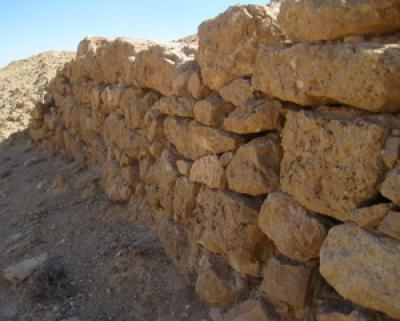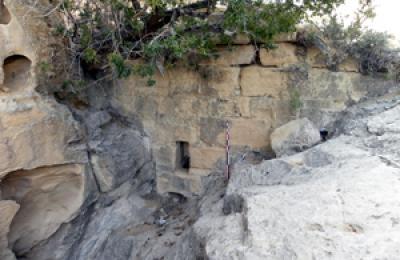A team of archaeologists has made discoveries of extensive water management and agricultural production in and around the ancient desert city of Petra, located in present-day Jordan.
Successful terrace farming of wheat, grapes and possibly olives resulted in a vast, green, agricultural "suburb" to Petra in an otherwise inhospitable, arid landscape. This terrace farming remained extensive through the third century and surface finds plus comparative data shows this type of farming continued in some extent until around the end of the first millennium, between 800 and 1000 A.D.
The archaeologists say the technological development was due to the ingenuity and enterprise of the ancient Nabataeans, whose prosperous kingdom had its capital at Petra until the beginning of the second century, when the Romans paid a visit.
Agricultural Success and then annexation
Dating the start of extensive terrace farming at Petra is important because this date coincides closely with the Roman annexation of the Nabataean Kingdom in A.D. 106 and the researchers correlate their domestic success to military defeat.
University of Cincinnati doctoral student Christian Cloke said in their statement, "No doubt the explosion of agricultural activity in the first century and the increased wealth that resulted from the wine and oil production made Petra an exceptionally attractive prize for Rome. The region around Petra not only grew enough food to meet its own needs, but also would have been able to provide olives, olive oil, grapes and wine for trade. This robust agricultural production would have made the region a valuable asset for supplying Roman forces on the empire's eastern frontier."
Successful terrace farming and water management when Petra was at its zenith as a trading center added not only to the city's economic importance but to its strategic military value as well, because there were limited options in the region for supplying troops with essential supplies. On large stretches of land north of Petra, inhabitants built complex and extensive systems to dam wadis (riverbeds) and redirect winter rainwater to hillside terraces used for farming.

A wall supporting a hillside terrace used for farming outside Petra. Image courtesy of BUPAP (Brown University Petra Archaeological Project)
Rainfall in the region occurs only between October and March, often in brief, torrential downpours, so it was important for Petra's inhabitants to capture and store all available water for later use during the dry season. Over the centuries, the Nabataeans of Petra became experts at doing so, creating broad watersheds of sandstone hills that naturally directed water flow to the city center, and then using a complex system of pipes and channels to direct water it to underground cisterns where it was stored for later use.

This canyon dam and water pipe were part of ancient Petra's complex water-management system. Image courtesy of BUPAP (Brown University Petra Archaeological Project)
"Perhaps most significantly," said Cloke, "it's clear that they had considerable knowledge of their surrounding topography and climate. The Nabataeans differentiated watersheds and the zones of use for water: water collected and stored in the city itself was not cannibalized for agricultural uses. The city's administrators clearly distinguished water serving the city's needs from water to be redirected and accumulated for nurturing crops. Thus, extensive farming activity was almost entirely outside the bounds of the city's natural catchment area and utilized separate watersheds and systems of runoff."
The presence of highly developed systems of landscape modification and water management at Petra take on broader significance as they offer insight into geopolitical changes and Roman imperialism.
Cloke and Cecelia Feldman, classics lecturer at UMass-Amherst will present their findings Jan. 4 at the Archaeological Institute of America Annual Meeting in Seattle.






Comments